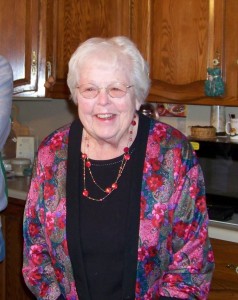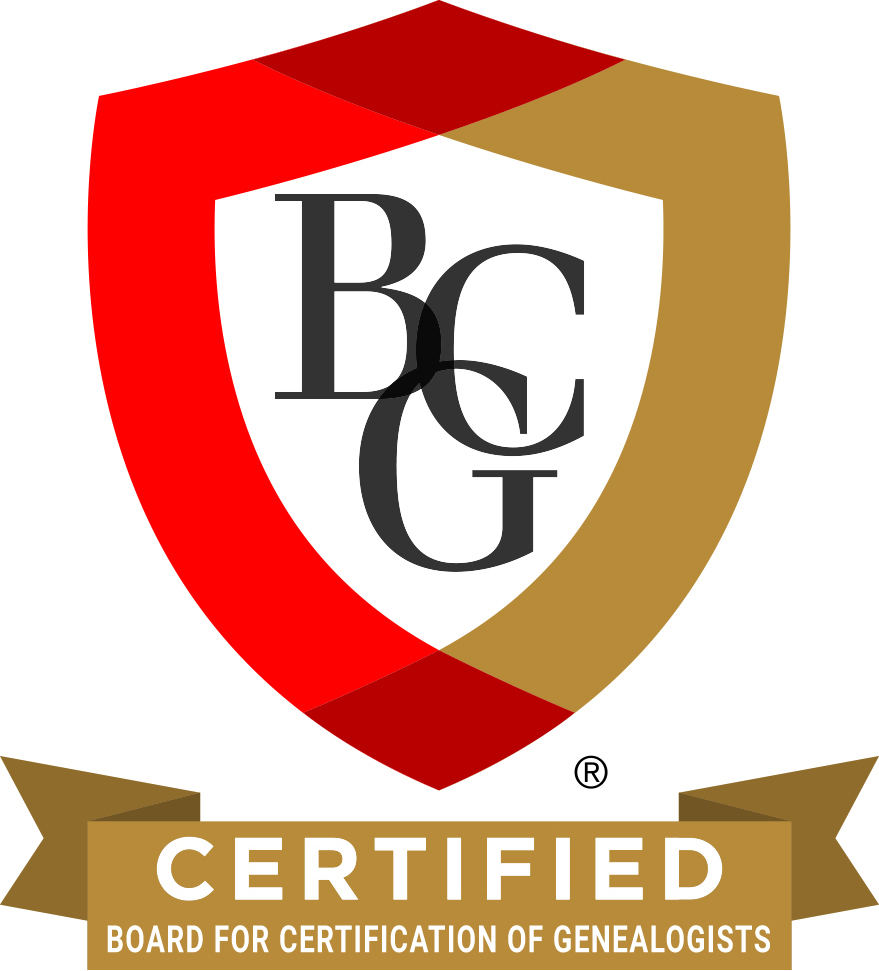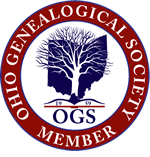A shout-out to Jean Giesige, who mentioned my Aunt Kate last week in her weekly column, Calamity Kitchen. Her lighthearted, often touching and inspirational articles are featured in the Daily Standard. We look forward to reading them and having a little chuckle.
Last week’s piece reflected on sauerkraut and babies, and she ended it with my Aunt Kate’s Mango Kraut Recipe, which was published in the Mercer County Farm Bureau Women’s Committee Cookbook, about 1982.

Kate (Miller) Eichler
Aunt Kate (Miller) Eichler (1927-2016) and her four sisters were all very good cooks. I would recommend any of their recipes that you find in old local cookbooks.
And those cookbooks are still out there.
Churches often published cookbooks that featured the best recipes from the members of their women’s group. Other organizations, like the Mercer County Farm Bureau Women’s Committee, published cookbooks with local tried and true recipes.
When I was a teenager, I spent a day at Aunt Kate’s house and she taught me how to make her award-winning Swedish Tea Ring. Aunt Kate usually won a blue ribbon for her Swedish Tea Ring every year at the Mercer County Fair. It took the better part of a day to make the yeast bread and it was delicious. Her sugar cookies were delicious, too. So, I would imagine her Mango Kraut recipe would also be tasty.
I am not the cook my aunts were. I think I could be. I’m a decent cook and baker when I cook. I just don’t take the time to cook for a couple reasons. For one, cooking takes a lot of time and I prefer to do other things. Like genealogy research. Plus, it is easy and healthy to put a salad together. We are pretty creative with our lettuce salads and we try to eat light.
Even though I don’t cook much, I do have a collection of cookbooks, many from local churches. I pull them out when the family comes home and for family reunions. And when I feel like cooking a special meal.
Some people collect cookbooks. My mom was one of those people and she was also an excellent cook. She had a lot of cookbooks from a lot of places and a cookbook was always a good gift for her. A cookbook from Amish country or from another church was a good choice. I saved some cookbooks from my mom’s collection but gave many of them to my cousin Sharon.
But I saved the church cookbooks. Church cookbooks are the best. Women submitted their best recipes, the ones they knew were tasty and for the most part fool-proof. Some of these recipes have been in handed down in families for generations. It was often a difficult decision to pick which recipes to include. After all, these cookbooks would be around for along time.
Take for example:

St. John Lutheran Church, Hopewell Township, 1968 cookbook
This is A Book of Favorite Recipes from the Women of St. John’s Lutheran Church [Hopewell Township], 1968. Aunt Kate gave me this cookbook, from her church, as a bridal shower gift in 1973 and I have used this cookbook for over 50 years since.
Aunt Kate submitted about 18 of her favorite recipes for the book. She submitted a variety of recipes from appetizers, salads, vegetables, and main dishes, to cakes, cookies, and desserts. One of my favorite recipes that she submitted, which I haven’t made for years, is her recipe called Beef Porcupines. An easy, tasty recipe.
BEEF PORCUPINES
1 lb. ground beef
1 ½ tsp. salt
½ tsp. celery salt
1 Tbsp. grated onion
1 Tbsp. Worcestershire sauce
¼ – ½ c. uncooked rice
¼ tsp. pepper
2 Tbsp. chopped green pepper
4 c. tomato juice
1Tbsp. sugar
Mix together beef, rice, salt, pepper, celery salt, green pepper, and onion. Form into about 18 small meat balls. Pour tomato juice into a large skillet, add sauce and sugar. Add the meat balls, cover and simmer over low heat for about 1 hour or until rice is tender in the center of the meat balls. You can also add ¼ – ½ cup of uncooked rice to the tomato juice when you add the meat balls. Stir occasionally.
I can almost taste those meat balls. I may have to make this again soon.
No doubt about it, the church ladies are some of the best cooks and have the best recipes.
















You are welcome!
You're welcome, Karen. I'm still working on this also. Thank you so much for all of your wonderful Mercer County…
Very interesting and great picture (I had neersee before) of the church! Thanks for sharing this, Karen.
Ha! I see why you say that. Your original surname was probably something similar to Schmitt.
Thank you for letting me know.